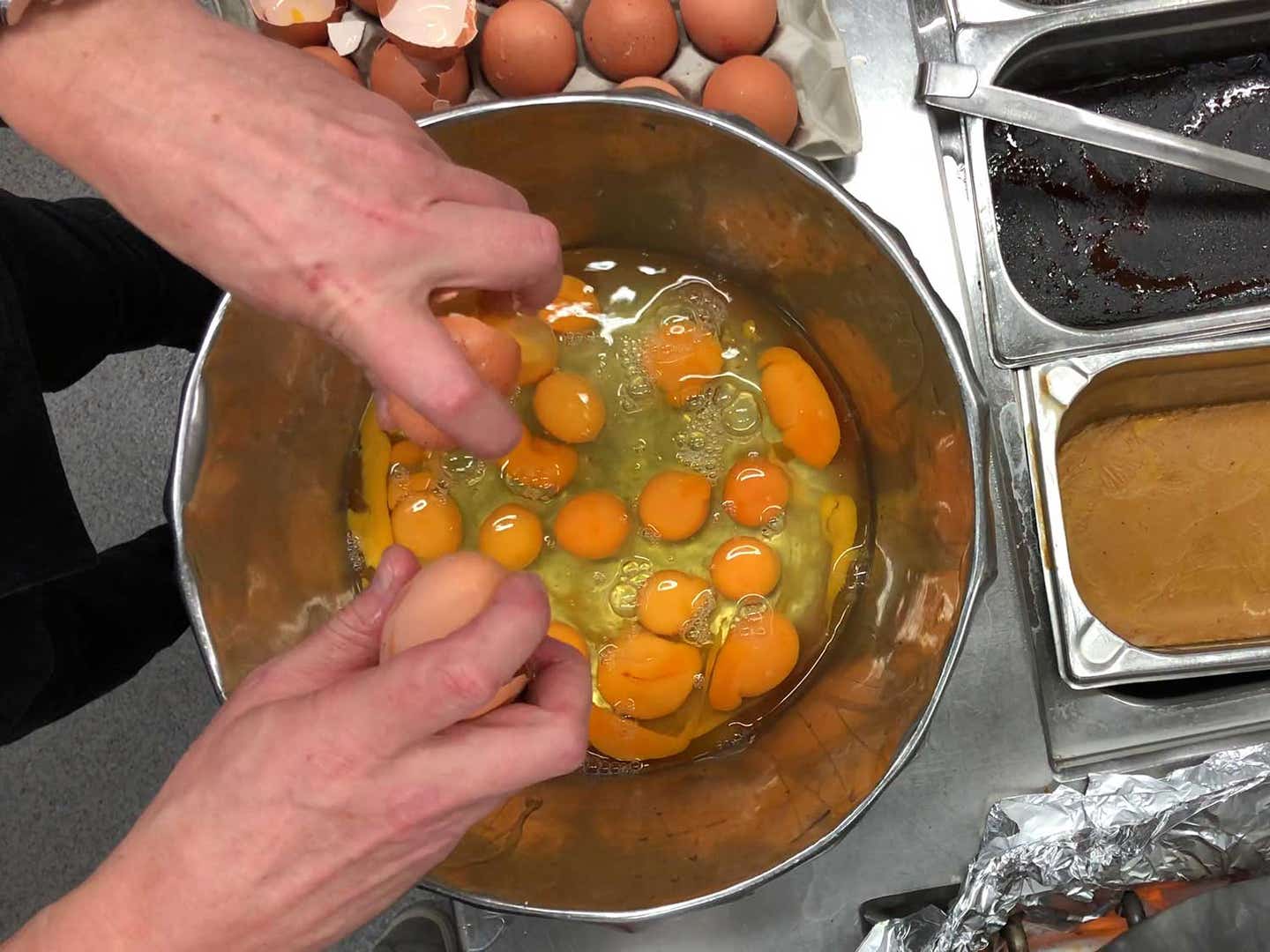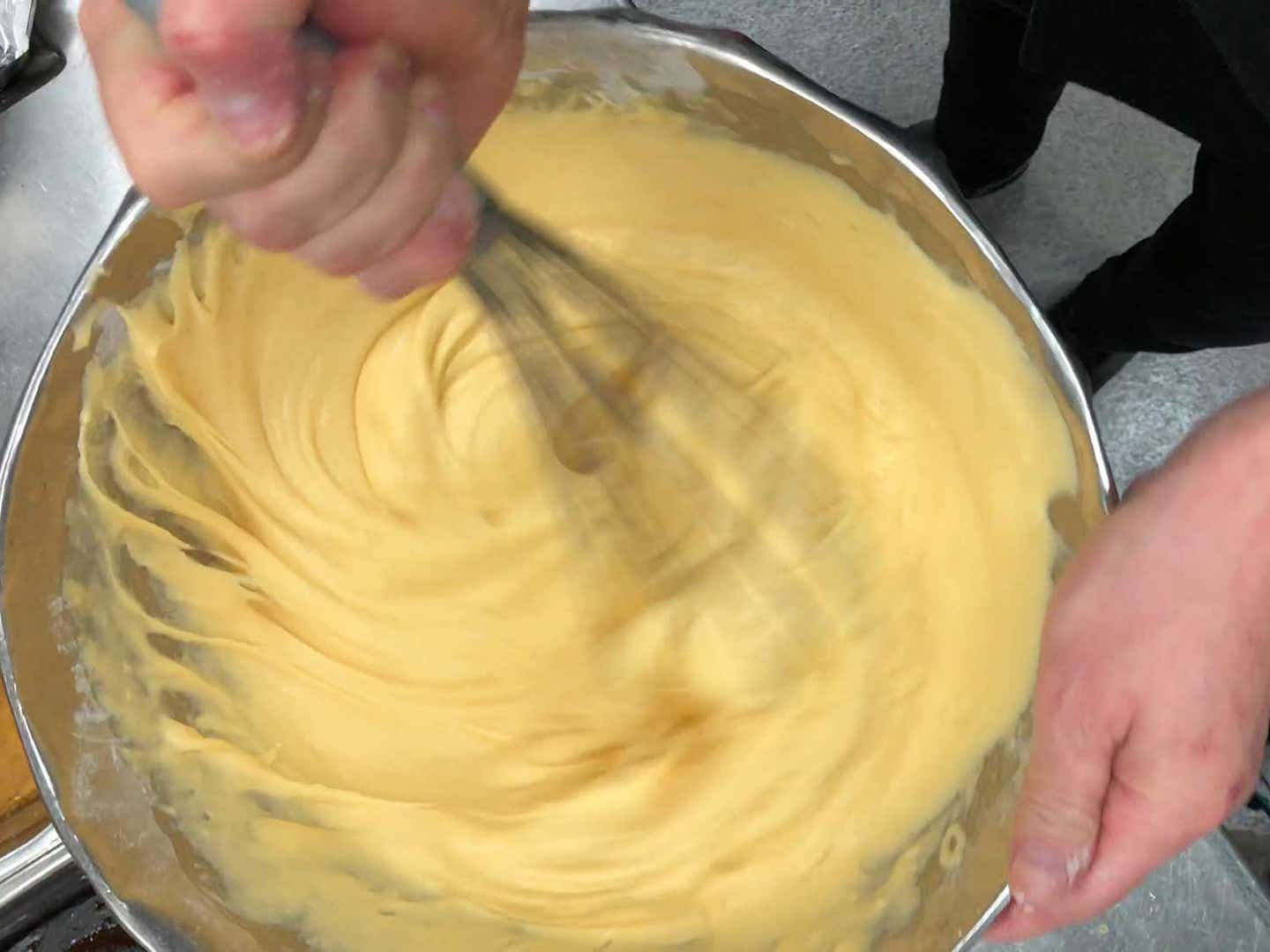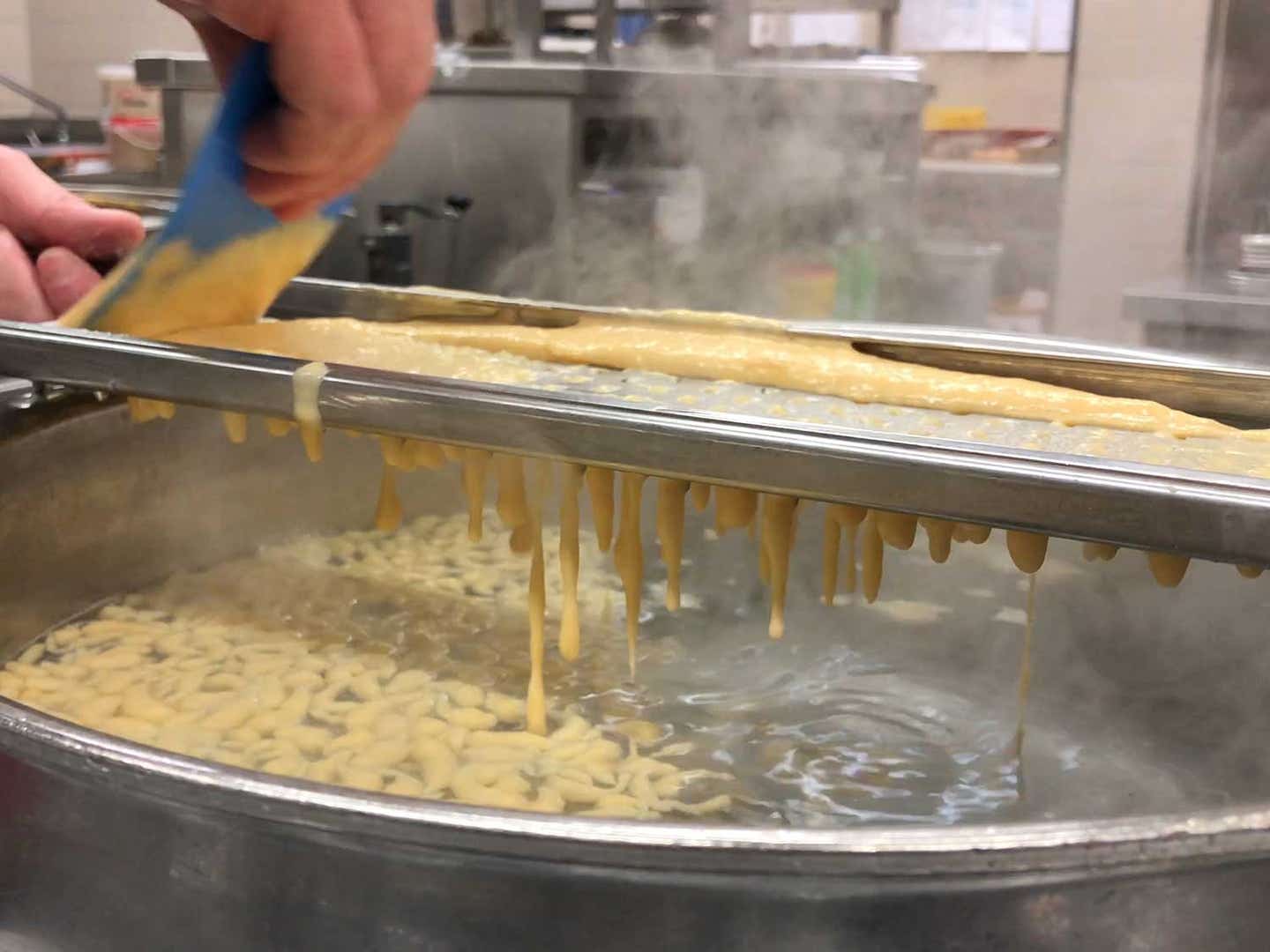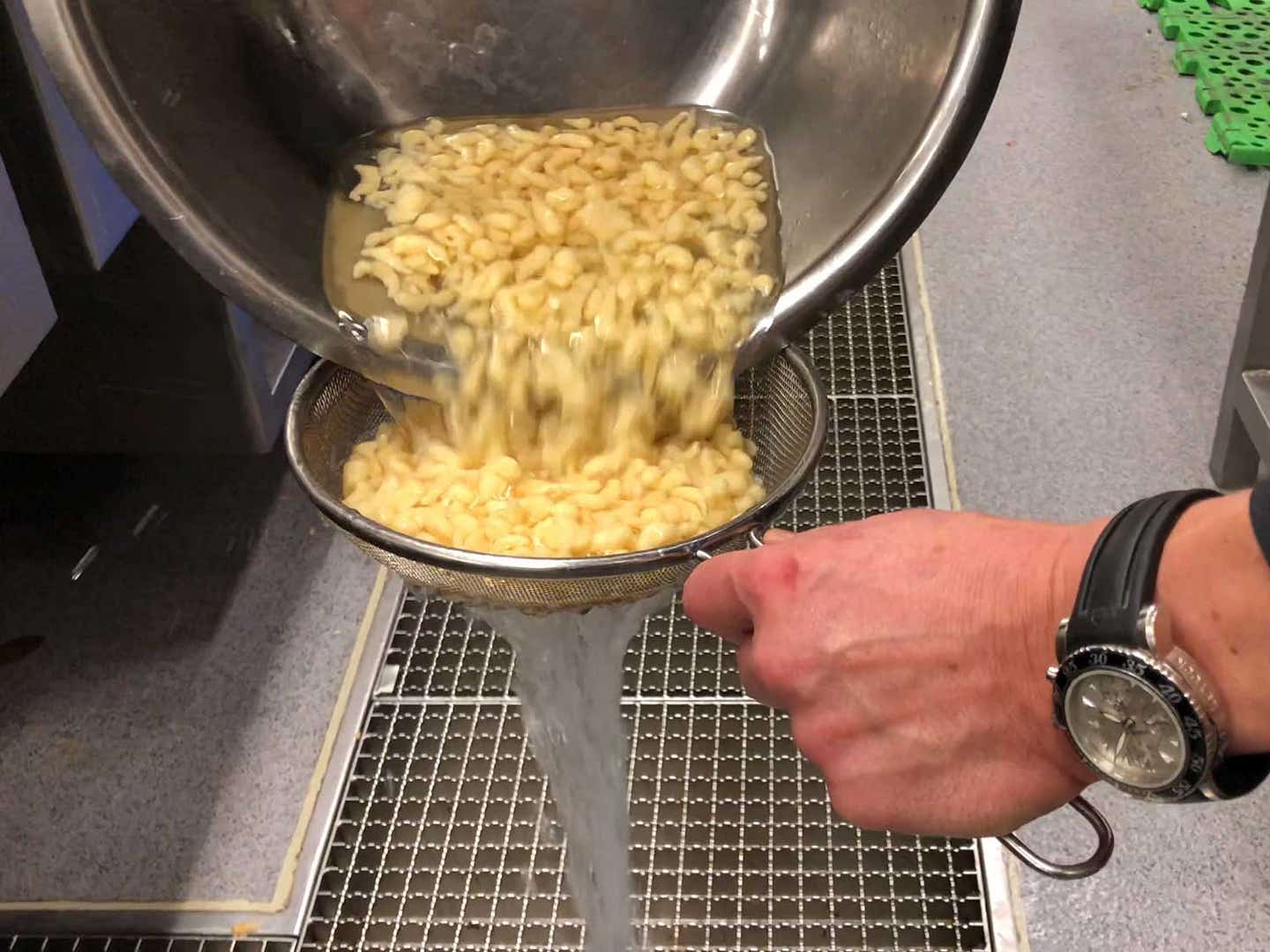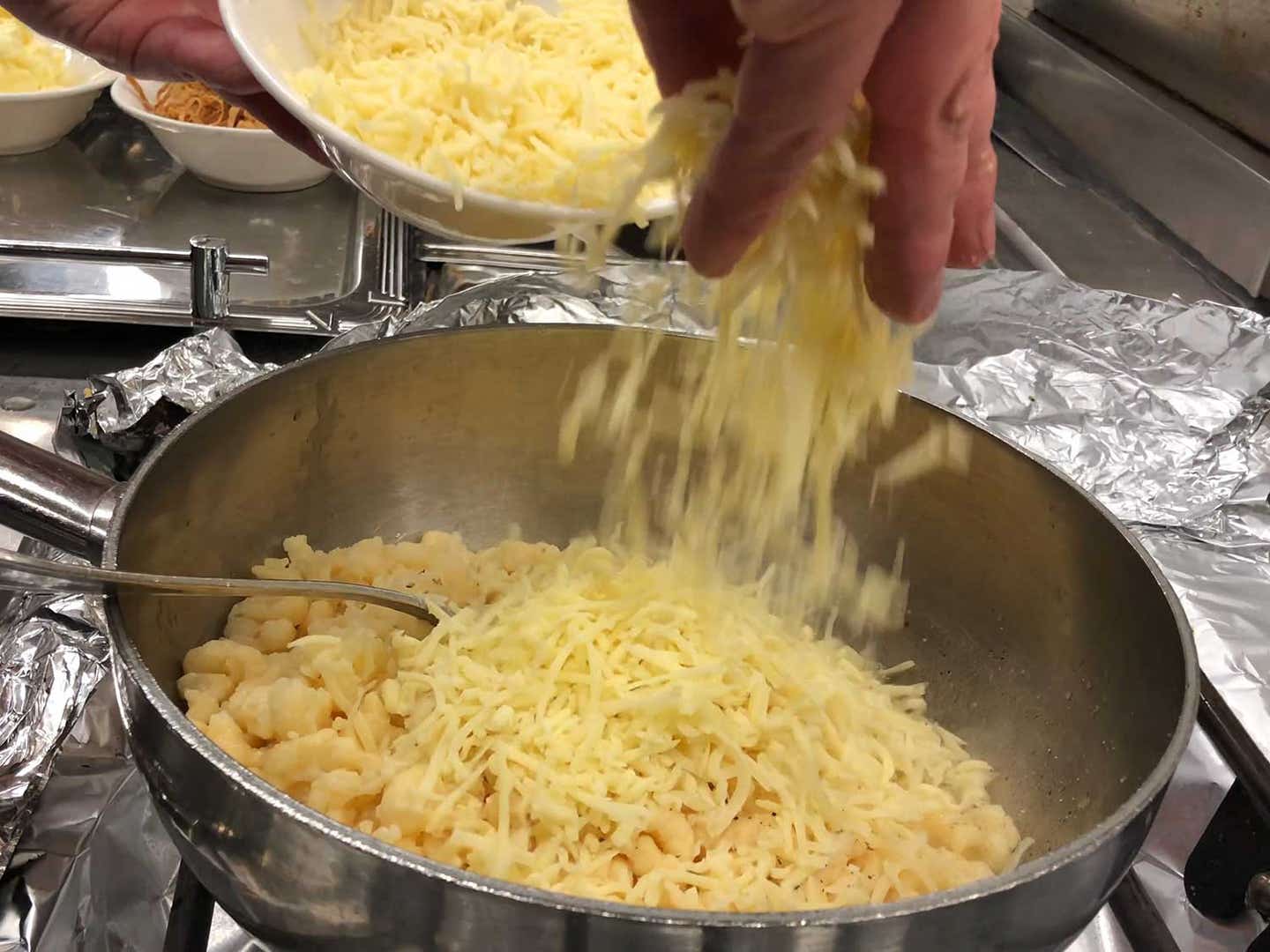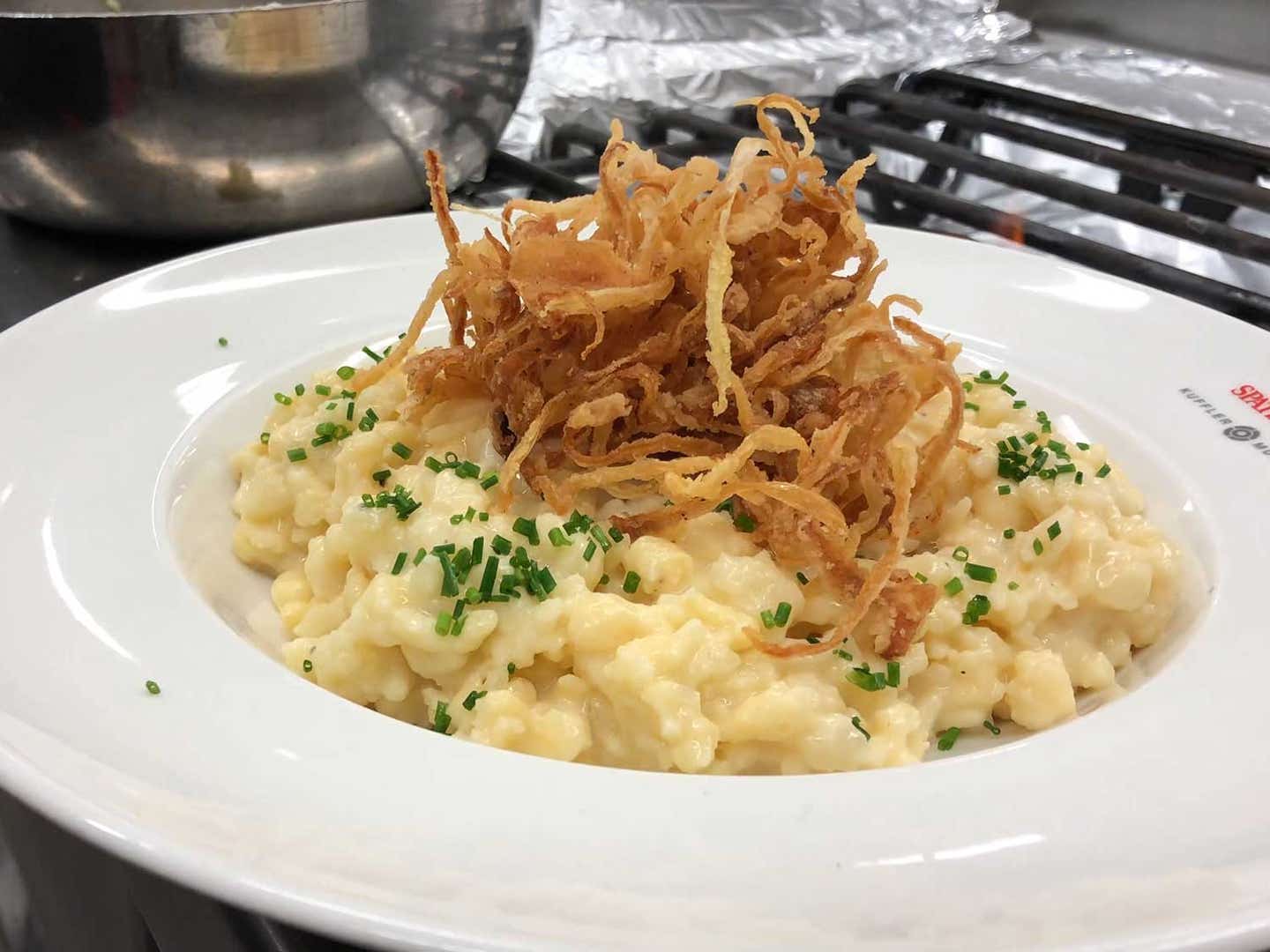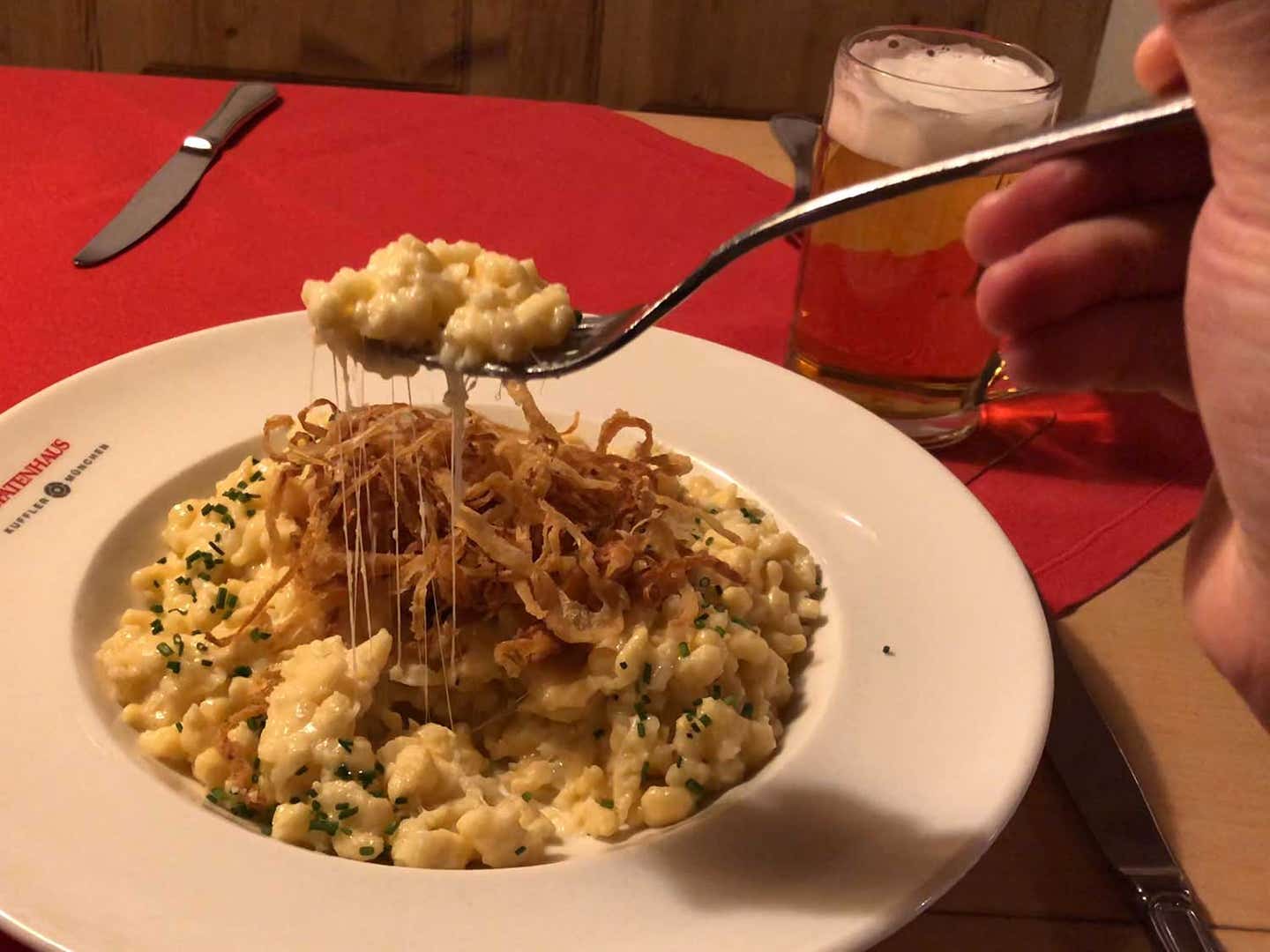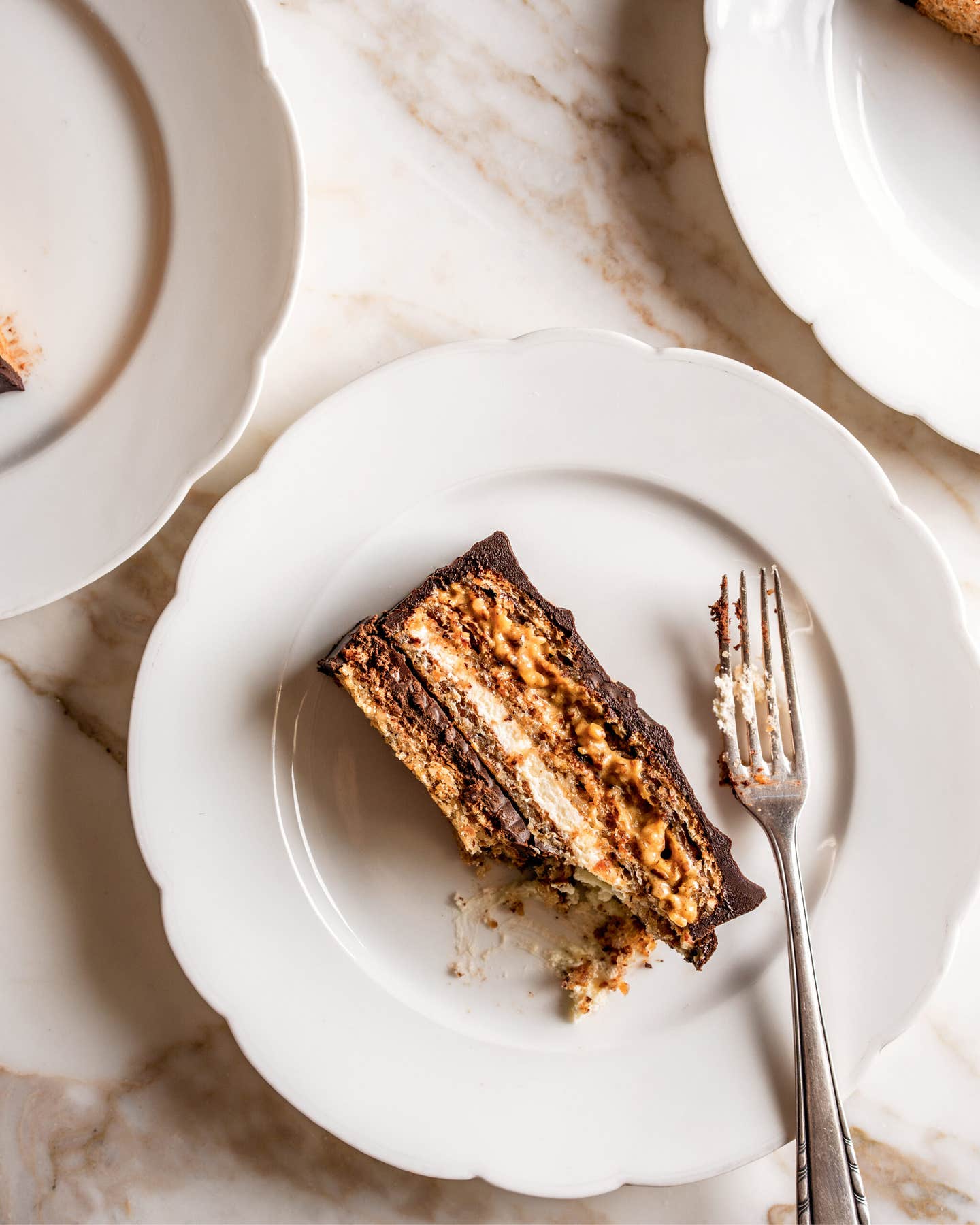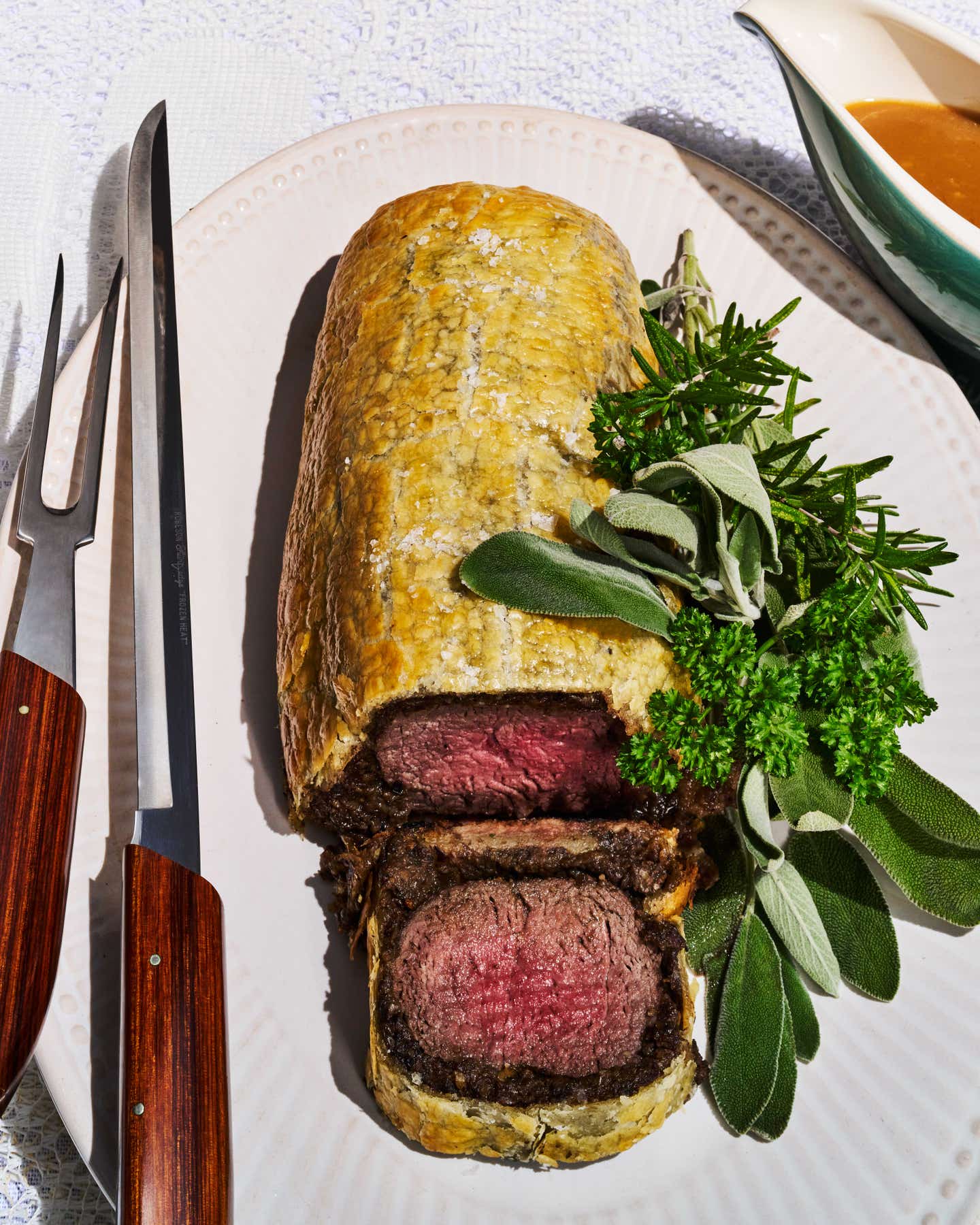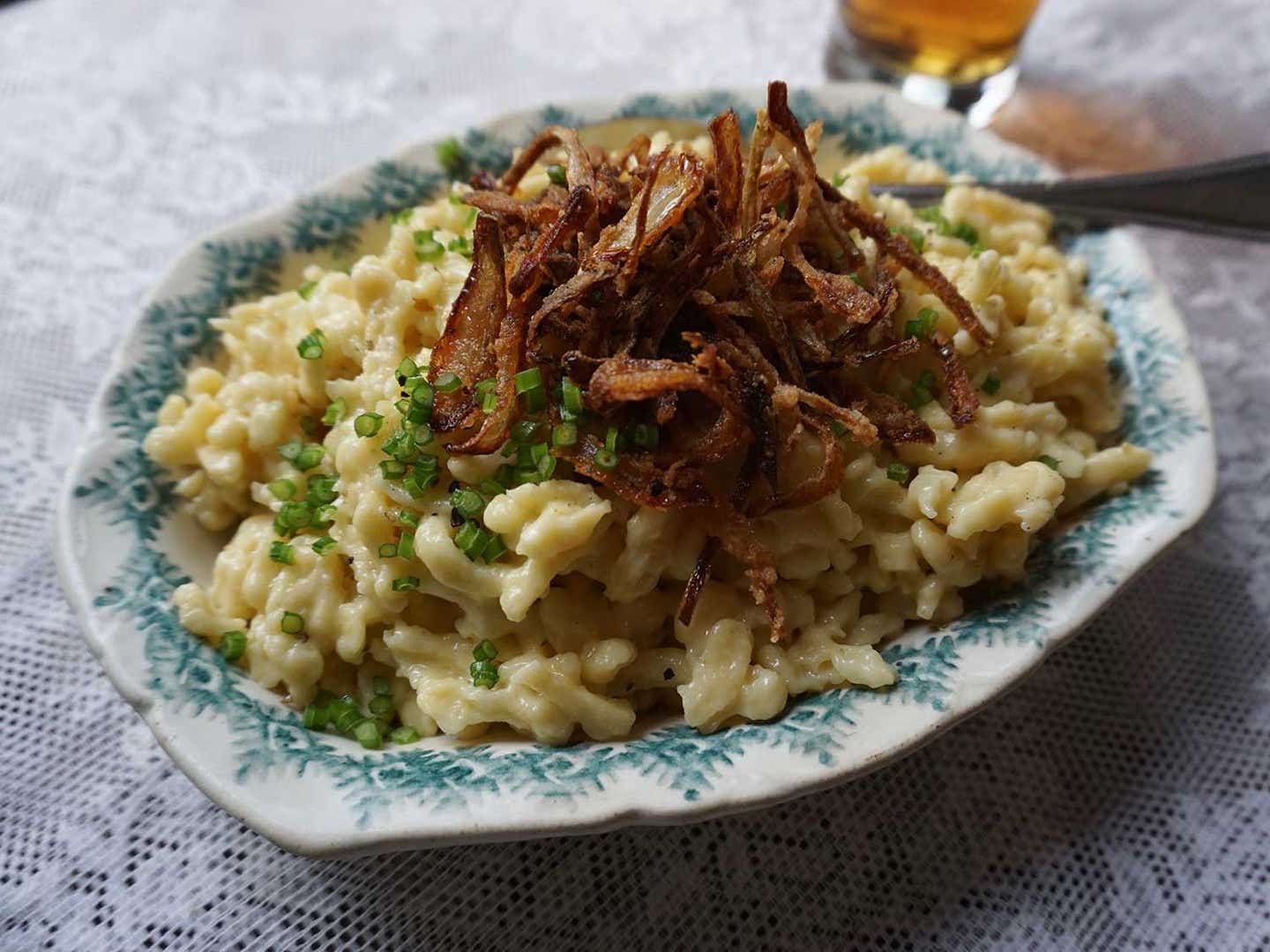
Learn to Make Spätzle: Germany’s Favorite Comfort Food
And meet its brother Käsespätzle—the beer hall mac n’ cheese of your dreams
You probably know about spätzle or spaetzle, the squiggly, egg-rich noodles served alongside meaty mains from Germany to Austria to Switzerland and beyond. But unless you've tried käsespätzle ("cheese spätzle"), enriched with industrial quantities of gruyère and crowned with crispy shoestring onions, you haven't had the tiny dumplings at their most decadent.
Spätzle is a catch-all term for bits of pasta boiled to bouncy firmness. They can be round, ribbony, or totally irregular in shape depending on the region and the cook, but they're almost always made from a simple batter of flour, eggs, milk, and a touch of nutmeg. Traditionally, spätzle were flicked into the pot from a wooden spätzlebrett ("spätzle board") using a lightning-fast technique that's no easy feat for beginners. Nowadays, the dough is more often smushed into the water through any range of perforated surfaces such as food mills, presses, hobels, and grater-like lids that rest on the rim of the pot.
Manfred Grossmann, chef at the perennially packed Spatenhaus an der Oper in Munich, says the trick to tender spätzle is whisking the batter vigorously until it's smooth and frothy with air bubbles. You can trust Grossmann—he hails from Swabia, Germany, the only region in Europe where spätzle bears an EU-approved Protected Geographical Indication (PGI). He also plates some 600 portions of käsespätzle a day at the multifloor institution, which caters to a raucous, beer-buzzed crowd of locals and out-of-towners.
Behind the swinging door, Grossmann works with the silent, swift assurance of a veteran restaurant chef. He scrapes the dough through the spätzle maker into a cauldron of boiling water, gives the brew a stir, and sets his mental timer for two minutes. In another pan, teenily diced onions sputter in butter; they’ll be added to the hot drained pasta along with chives, deep-fried onions, and fistfuls of cheese.
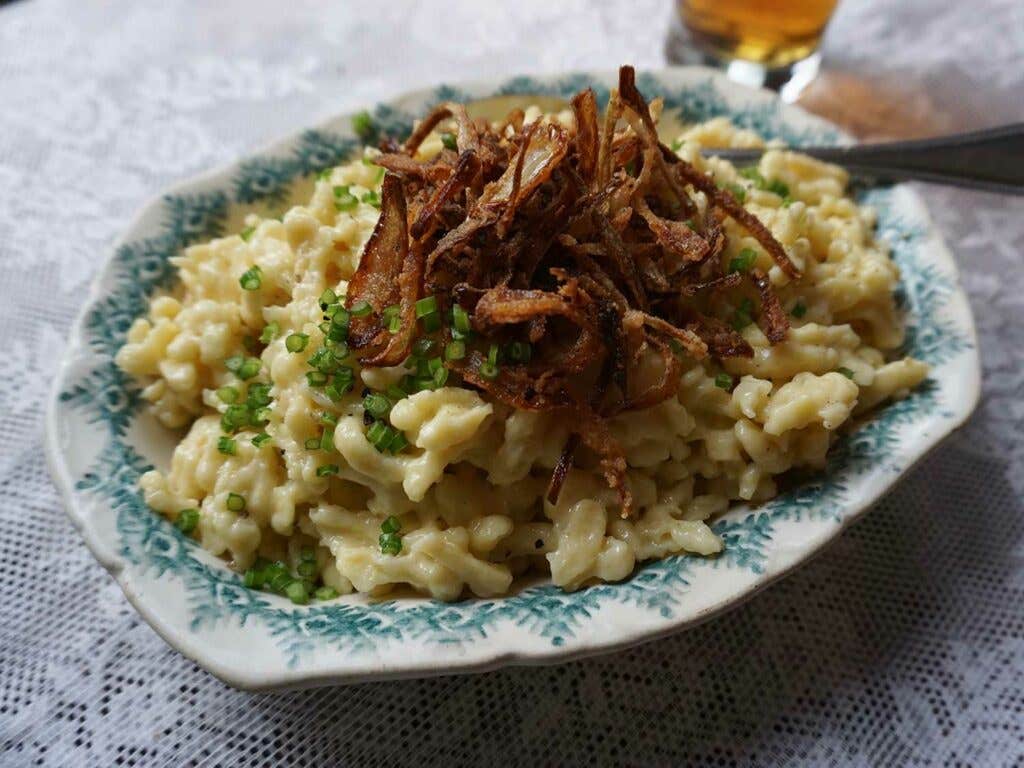
Bavarian mountain cheese, also known as Allgäuer Bergkäse, is Grossmann’s first choice for käsespätzle for its deep nuttiness and outstanding meltability. Ivory-colored and dense, the raw-milk cheese ages in the neighboring Allgäu Mountains. (Other traditional käsespätzle add-ins include Emmentaler, Gruyère, Vorarlberg Limburger, and Weisslacker.)
Whether you end up trying your hand at käsespätzle at home or ordering it straight from Spatenhaus's menu, you'll want to pair the dish with acidic sides that counteract the dish's over-the-top richness, like a simple green salad, assorted pickles, or German potato salad (just eighty-six the bacon). Then, make like a Münchener and crack open a few bottles of German lager such as Spaten's Oktoberfestbier to wash everything down.
And in the off chance you're blessed with leftovers, you're in luck: Heat the whole gooey mess in a buttered skillet, allowing the cheese to brown and bubble like the top of a croque monsieur. When you're nursing a morning-after, brewski-induced headache, there's nothing better.
How to Make Spatzle: A Step-By-Step Guide
Make the Batter
Start with plenty of fresh, whole eggs. Room temperature eggs whip up to a greater volume than cold, so, for the lightest batter, allow the eggs to sit out of the fridge for 20–30 minutes before beating.
Whisk Until Frothy
Once the dry ingredients are incorporated, continue whipping the batter for a minute or two to further aerate—the more air you are able to beat into the mix, the lighter and more tender the spaetzle. It takes a bit of muscle, so call in a friend if your arm starts to get tired.
Form the Solids
While wooden spaetzle boards are the traditional tool for making these irregular little dumplings, it is far easier and quicker to press the batter through an evenly perforated tool. Different styles of spaetzle makers that do just that are inexpensive and available online, though perforated hotel pans, colanders with wide holes, potato ricers, or even large, coarse graters can get the job done.
Boil and Strain
Spaetzle can be cooked a few hours ahead of time—bring a large pot of well-salted water to a full boil, press the spaetzle batter into the water, then stir gently to separate any pieces that may have clumped together. When the water returns to a boil, cook the spätzle for 2 minutes, drain, and rinse well under plenty of cold water. This step will stop the cooking and prevent the spaetzle from sticking together as they settle. If you are making the spaetzle more than an hour ahead of time, toss the rinsed dumplings with a drizzle of olive oil, transfer to an airtight container, and refrigerate up to 24 hours.
Add Cheese and Seasonings
Just before you’re ready to serve the spaetzle, reheat in a skillet with onions, butter, and plenty of melty Alpine cheese—if you can find Bavarian bergkäse like they use at Spatenhaus an der Oper, try that. If not, a gruyère or well-aged comté will do the trick.
Finish with Toppings
Crack open a bottle of Munich lager, top your käsespätzle with chives, black pepper, and a crown of crispy fried onions, then serve immediately. The cheese should still be silky and molton.
Keep Reading
Continue to Next Story
